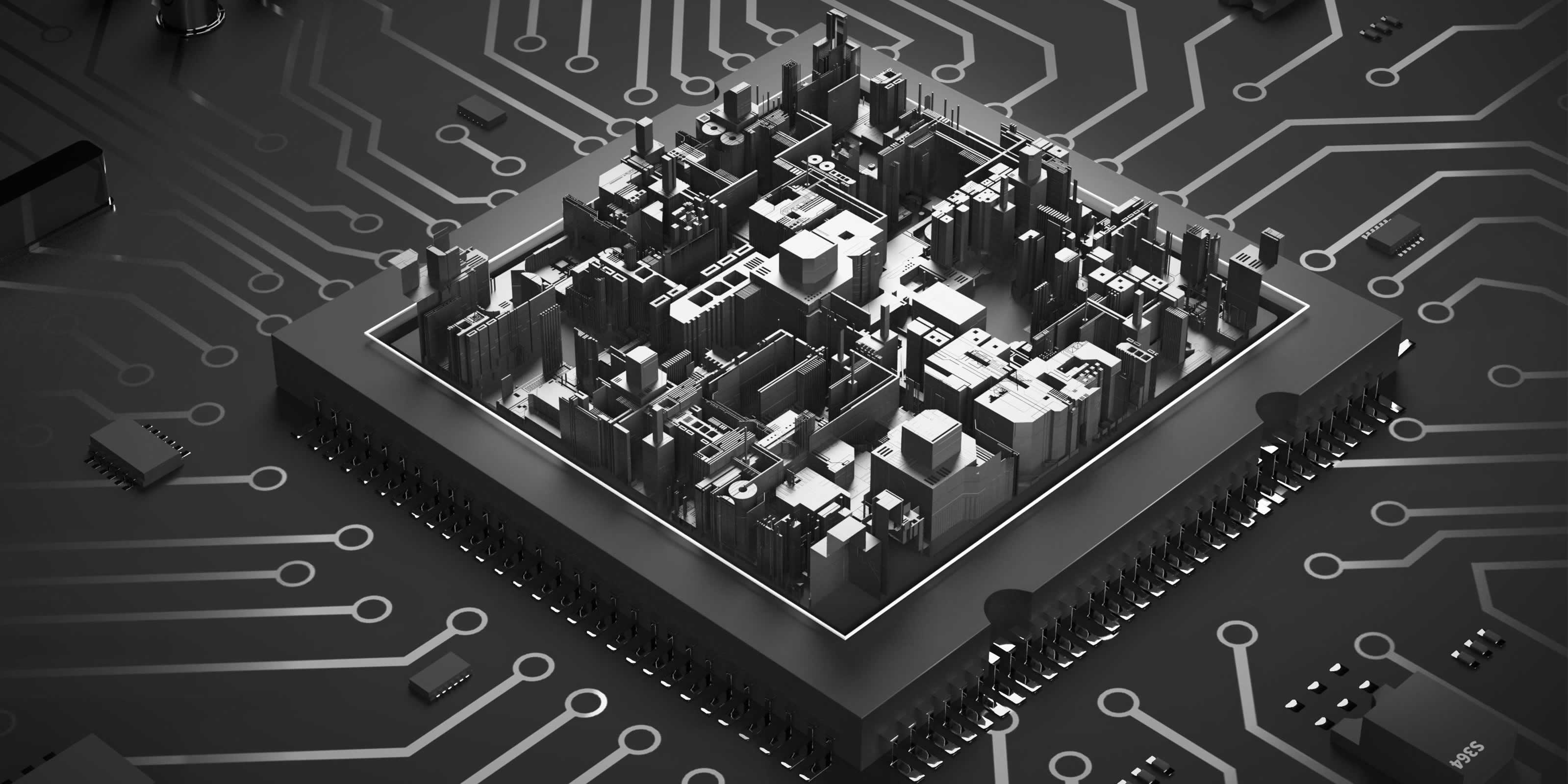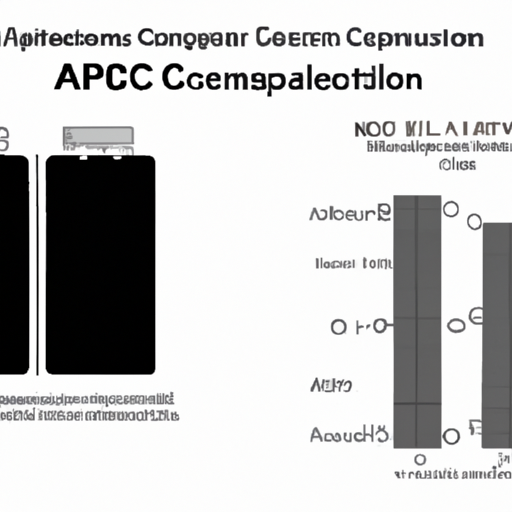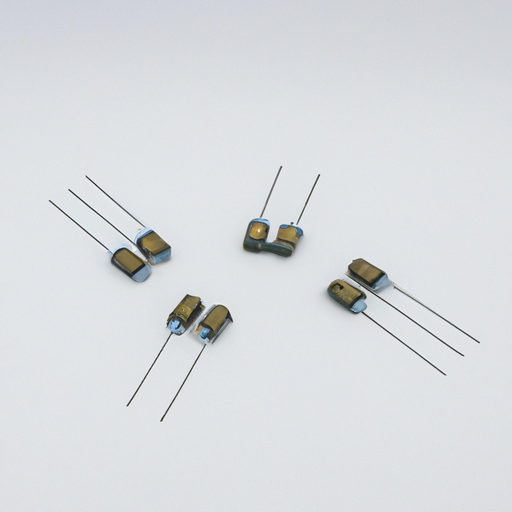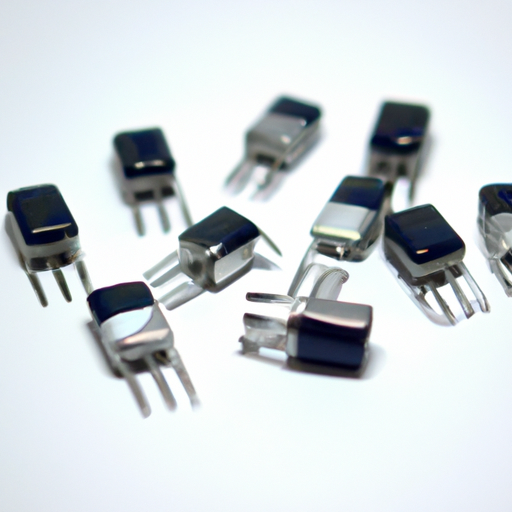CORE_COMPETENCE
Product_Leaders
index_more
index_more_content
info_item01
info_item_content01
info_item02
info_item_content02
info_item03
info_item_content03
info_item04
info_item_content04
NEWS
NEWS
application development in Capacitors for CFR-12JB-52-110R: key technologies and success stories
Application Development in Capacitors for CFR-12JB-52-110R: Key Technologies and Success Stories
Developing applications for capacitors like the CFR-12JB-52-110R involves a comprehensive understanding of both the technical specifications of the component and the broader context of application development. Below is an overview of key technologies and success stories related to capacitor application development.
Key Technologies
1. **Capacitor Types and Specifications**:
- The CFR-12JB-52-110R is a ceramic capacitor with specific capacitance, voltage rating, and tolerance. Understanding these specifications is crucial for selecting the right capacitor for a given application.
2. **Circuit Design**:
- Capacitors are integral to various circuit designs, including filtering, decoupling, and timing applications. A solid grasp of circuit theory and design principles is essential for effective application development.
3. **Simulation Software**:
- Tools like SPICE (Simulation Program with Integrated Circuit Emphasis) enable developers to simulate circuit behavior before physical implementation. This helps optimize designs that incorporate capacitors.
4. **PCB Design Tools**:
- Software such as Altium Designer, Eagle, or KiCAD is used for designing printed circuit boards (PCBs) that incorporate capacitors. These tools assist in layout design, ensuring proper placement and routing to minimize parasitic effects.
5. **Embedded Systems**:
- Many applications involve microcontrollers or microprocessors that require capacitors for power management and signal integrity. Familiarity with embedded systems programming is beneficial for developers.
6. **Power Management**:
- Capacitors are critical in power supply circuits, including voltage regulation and energy storage. Understanding power management techniques is vital for developing efficient applications.
7. **Testing and Validation**:
- Techniques for testing capacitor performance, such as ESR (Equivalent Series Resistance) and ESL (Equivalent Series Inductance) measurements, are important for ensuring reliability in applications.
Success Stories
1. **Consumer Electronics**:
- Capacitors like the CFR-12JB-52-110R are widely used in consumer electronics, such as smartphones and laptops, for power supply decoupling and signal filtering. Successful designs have led to improved performance, reduced noise, and extended battery life.
2. **Automotive Applications**:
- In the automotive industry, capacitors are used in various applications, including engine control units (ECUs) and infotainment systems. Successful integration of capacitors has enhanced the reliability and efficiency of these systems, contributing to better vehicle performance and safety.
3. **Renewable Energy Systems**:
- Capacitors are essential in renewable energy applications, such as solar inverters and wind turbine controllers. Successful projects have demonstrated improved energy conversion efficiency and system stability, enabling more effective harnessing of renewable resources.
4. **Medical Devices**:
- In medical technology, capacitors are used in devices like defibrillators and imaging equipment. Success stories highlight the importance of high-reliability capacitors in critical applications where performance and safety are paramount, ensuring accurate diagnostics and effective treatment.
5. **Telecommunications**:
- Capacitors are integral to telecommunications equipment, helping to manage power supply and signal integrity. Successful implementations have led to enhanced data transmission rates, reduced signal noise, and improved overall system performance.
Conclusion
The development of applications involving capacitors like the CFR-12JB-52-110R requires a blend of electrical engineering knowledge, circuit design skills, and familiarity with modern design tools. Success stories across various industries demonstrate the versatility and importance of capacitors in enhancing the performance and reliability of electronic systems. As technology continues to evolve, the role of capacitors in innovative applications will likely expand, leading to new opportunities for developers. The ongoing advancements in capacitor technology and application methodologies will further drive innovation across multiple sectors.
2025-04-12
0
S6008L Resistors highlighting the core functional technology articles and application development cases of Resistors that are effective.
Overview of S6008L Resistors and Their Applications
The S6008L resistors are a specific type of resistor that can be utilized in various electronic applications. While detailed articles and case studies on the S6008L may not be readily available, we can explore the core functional technology of resistors in general and highlight effective application development cases that demonstrate their utility.
Core Functional Technology of Resistors
1. **Basic Functionality**:
- Resistors are passive components that limit the flow of electric current in a circuit. They are essential for controlling voltage and current levels, ensuring that electronic devices operate within safe parameters.
2. **Types of Resistors**:
- **Fixed Resistors**: These have a constant resistance value and are widely used in circuits for current limiting and voltage division.
- **Variable Resistors**: Such as potentiometers, allow for adjustable resistance, making them useful in applications like volume controls.
- **Specialty Resistors**: Include thermistors (temperature-sensitive), photoresistors (light-sensitive), and others that respond to environmental changes.
3. **Material Composition**:
- Resistors can be made from materials like carbon, metal film, or wire-wound materials. The choice of material impacts performance characteristics such as stability, temperature coefficient, and noise.
4. **Power Rating**:
- Each resistor has a power rating that indicates the maximum power it can dissipate without overheating. This is critical for ensuring reliability in various applications.
5. **Tolerance**:
- Tolerance indicates the precision of the resistor's value. Lower tolerance values signify higher accuracy, which is crucial in sensitive applications.
Application Development Cases
1. **Voltage Divider Circuits**:
- Resistors are integral in voltage divider configurations, allowing designers to obtain specific voltage levels from a higher voltage source. This is particularly useful in sensor applications where precise voltage levels are necessary for accurate readings.
2. **Current Limiting in LED Circuits**:
- In LED applications, resistors are used to limit the current flowing through the LED, preventing damage and ensuring optimal brightness. For instance, using an S6008L resistor in an LED circuit can help achieve the desired luminosity while protecting the LED from excessive current.
3. **Signal Conditioning in Audio Systems**:
- Resistors are employed in audio applications to filter signals and shape the frequency response of audio equipment. This is essential for designing high-fidelity audio systems, where clarity and sound quality are paramount.
4. **Pull-Up and Pull-Down Resistors in Digital Circuits**:
- In digital electronics, resistors are used to define logic levels at the inputs of logic gates. Pull-up resistors connect inputs to a high voltage level, while pull-down resistors connect them to ground, preventing floating inputs and ensuring reliable operation.
5. **Temperature Sensing with Thermistors**:
- Thermistors, a type of resistor, change their resistance based on temperature. They are widely used in HVAC systems and other temperature-sensitive applications to provide accurate readings and control.
6. **Power Supply Regulation**:
- Resistors play a vital role in power supply circuits, helping to regulate voltage levels and ensure stable operation of electronic devices. They can be part of feedback loops in voltage regulators, contributing to overall circuit stability.
Conclusion
Resistors, including specific types like the S6008L, are fundamental components in electronic circuits, controlling current and voltage levels, providing stability, and enabling various functionalities. Their applications span multiple fields, including consumer electronics, automotive, industrial automation, and telecommunications. Understanding the core technology and effective application cases of resistors is essential for engineers and designers in developing reliable and efficient electronic systems. The versatility and critical role of resistors in circuit design underscore their importance in modern electronics.
2025-04-11
0
What industries do the application scenarios of inductor pictures include?
What Industries Do the Application Scenarios of Inductor Pictures Include?
I. Introduction
Inductors are fundamental components in electronic circuits, playing a crucial role in the functioning of various devices. Defined as passive electrical components that store energy in a magnetic field when electric current flows through them, inductors are essential for managing electrical energy in a wide range of applications. Their importance cannot be overstated, as they are integral to the operation of power supplies, filters, and oscillators, among other systems.
Visual representations of inductors, often referred to as inductor pictures, serve as valuable tools for understanding their applications. These images help engineers, students, and enthusiasts grasp the complexities of inductors and their roles in different industries. In this blog post, we will explore the various industries that utilize inductors, the significance of visual aids in understanding these components, and the future of inductor technology.
II. Understanding Inductors
A. Basic Principles of Inductance
Inductance is the property of an electrical conductor that opposes changes in current. When current flows through an inductor, it generates a magnetic field around it. This magnetic field stores energy, which can be released back into the circuit when the current changes. The ability of an inductor to store energy is quantified by its inductance value, measured in henries (H).
B. Types of Inductors
Inductors come in various types, each suited for specific applications:
1. **Air Core Inductors**: These inductors do not have a magnetic core, making them suitable for high-frequency applications due to their low losses.
2. **Iron Core Inductors**: Featuring a core made of iron, these inductors are used in applications requiring higher inductance values and are common in power supplies.
3. **Ferrite Core Inductors**: Ferrite cores are used to enhance inductance while minimizing losses, making them ideal for RF applications.
4. **Toroidal Inductors**: Shaped like a doughnut, toroidal inductors provide high inductance in a compact form factor, reducing electromagnetic interference.
C. Key Specifications and Parameters
When selecting an inductor for a specific application, several key specifications must be considered:
1. **Inductance Value**: The primary parameter that determines how much energy the inductor can store.
2. **Current Rating**: The maximum current the inductor can handle without overheating.
3. **DC Resistance**: The resistance of the inductor when a direct current flows through it, affecting efficiency.
4. **Quality Factor (Q)**: A measure of the inductor's efficiency, with higher Q values indicating lower energy losses.
III. Application Scenarios of Inductors
Inductors find applications across various industries, each with unique requirements and challenges.
A. Consumer Electronics
In consumer electronics, inductors play a vital role in power supplies, where they help regulate voltage and current. They are also used in audio equipment to filter signals, ensuring high-quality sound reproduction. Additionally, inductors are integral to smartphones and tablets, where they manage power distribution and signal integrity.
B. Automotive Industry
The automotive industry has seen a significant shift towards electric vehicles (EVs), where inductors are crucial for managing power in electric drivetrains. They are also used in infotainment systems, providing stable power to audio and navigation systems. Furthermore, inductors play a role in safety systems, such as anti-lock braking systems, where they help control the flow of electrical signals.
C. Telecommunications
In telecommunications, inductors are essential for signal processing, filtering out unwanted frequencies to ensure clear communication. They are widely used in RF applications, such as antennas and transmitters, where they help tune circuits to specific frequencies. Inductors also play a critical role in network infrastructure, managing power and signals in routers and switches.
D. Industrial Automation
Inductors are integral to industrial automation, particularly in motor drives, where they help control the speed and torque of electric motors. They are also used in sensors and actuators, providing reliable performance in various industrial applications. Additionally, inductors are crucial in power management systems, ensuring efficient energy use in manufacturing processes.
E. Renewable Energy
The renewable energy sector has embraced inductors in various applications, including solar inverters, where they help convert DC power from solar panels to AC power for the grid. Inductors are also used in wind turbine systems, managing power generation and storage. In energy storage systems, inductors play a role in regulating the flow of energy, ensuring efficient operation.
F. Medical Devices
In the medical field, inductors are used in imaging equipment, such as MRI machines, where they help generate the magnetic fields necessary for imaging. They are also found in patient monitoring systems, ensuring accurate readings of vital signs. Furthermore, inductors play a role in therapeutic devices, such as transcutaneous electrical nerve stimulation (TENS) units, which provide pain relief.
IV. Visual Representation of Inductors
A. Importance of Inductor Pictures in Education and Design
Visual representations of inductors are essential for education and design. They help students and engineers understand the physical characteristics of inductors, their placement in circuits, and their interactions with other components. By providing a clear visual context, inductor pictures enhance comprehension and facilitate better design decisions.
B. Types of Visual Representations
Various types of visual representations are used to depict inductors:
1. **Diagrams and Schematics**: These provide a simplified view of how inductors fit into circuits, illustrating their connections and functions.
2. **Photographs of Physical Inductors**: Real-world images help users identify different types of inductors and understand their physical characteristics.
3. **Simulation Software Outputs**: Advanced simulation tools can model inductor behavior in circuits, providing insights into performance under different conditions.
C. How Visual Aids Enhance Understanding of Applications
Visual aids play a crucial role in enhancing understanding by providing context and clarity. They allow users to visualize complex concepts, making it easier to grasp how inductors function in various applications. This understanding is vital for engineers and designers as they develop new technologies and improve existing systems.
V. Challenges and Considerations
A. Limitations of Inductors in Certain Applications
While inductors are versatile components, they do have limitations. For instance, they can introduce delays in signal processing due to their energy storage characteristics. Additionally, inductors can be bulky, making them less suitable for compact designs.
B. Design Considerations for Effective Use of Inductors
When designing circuits that incorporate inductors, engineers must consider factors such as inductance value, current rating, and physical size. Proper selection and placement are crucial to ensure optimal performance and efficiency.
C. Future Trends in Inductor Technology and Applications
The future of inductor technology is promising, with ongoing research focused on improving efficiency, reducing size, and enhancing performance. Innovations such as integrated inductors and advanced materials are expected to drive the next generation of inductors, expanding their applications across industries.
VI. Conclusion
Inductors are indispensable components across various industries, from consumer electronics to renewable energy. Their ability to store and manage electrical energy makes them vital for the functioning of numerous devices and systems. Visual aids, such as inductor pictures, enhance understanding and facilitate better design decisions, ensuring that engineers can effectively leverage these components in their work.
As technology continues to evolve, the role of inductors will likely expand, leading to new applications and innovations. By understanding the significance of inductors and their visual representations, we can better appreciate their impact on modern technology and the future of electronics.
VII. References
1. Academic journals and articles on inductors and their applications.
2. Industry reports and white papers discussing trends in inductor technology.
3. Books on electronics and inductors, providing foundational knowledge and advanced insights.
This comprehensive exploration of inductors and their applications highlights their importance across various industries and the role of visual aids in enhancing understanding. As we look to the future, the evolution of inductor technology promises exciting developments that will shape the landscape of electronics.
2025-03-16
2

























